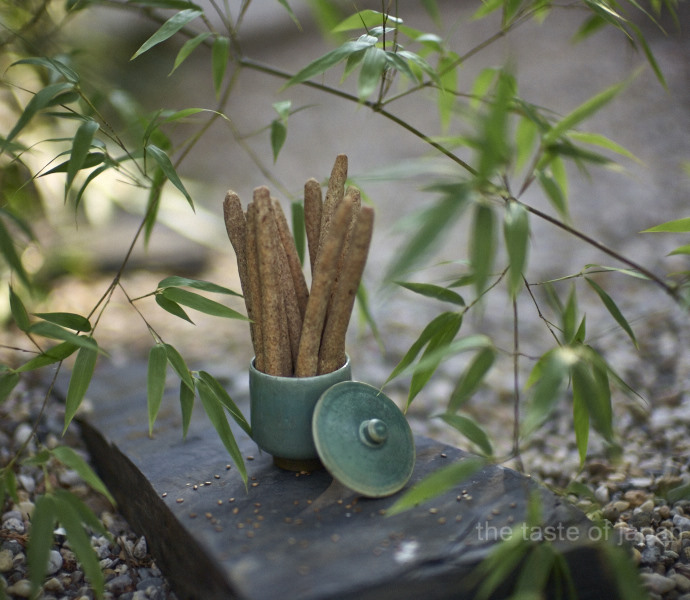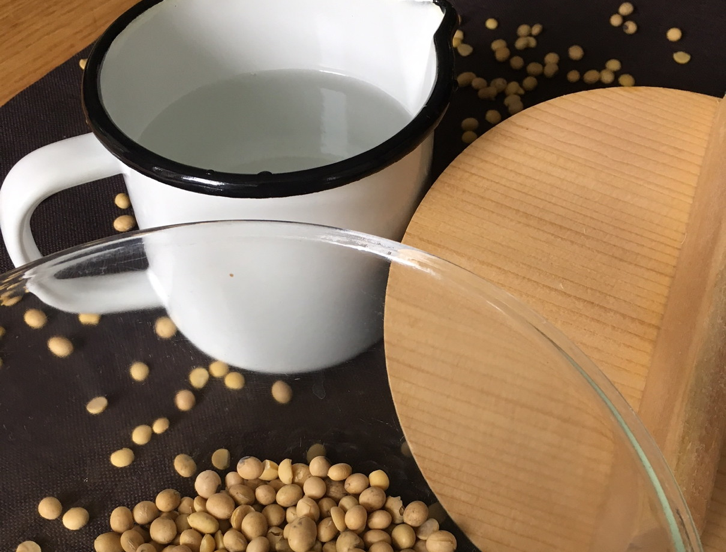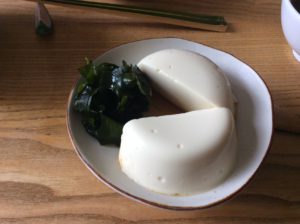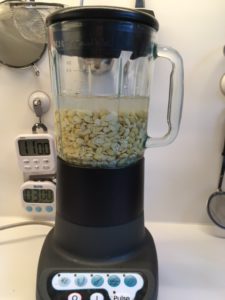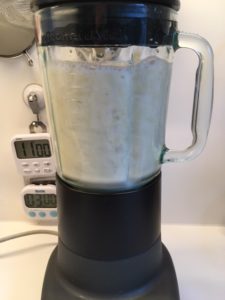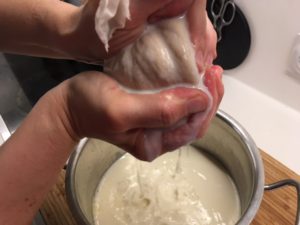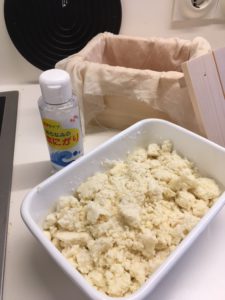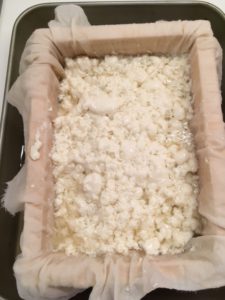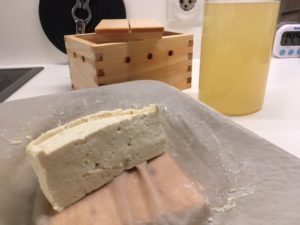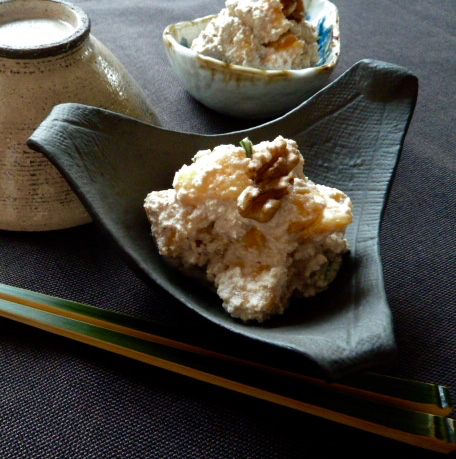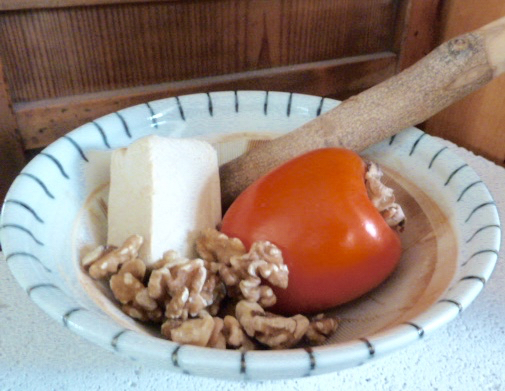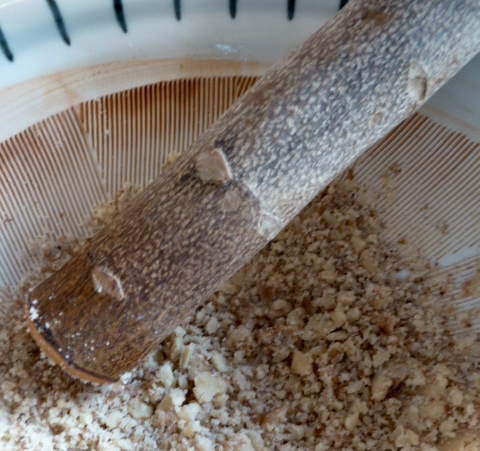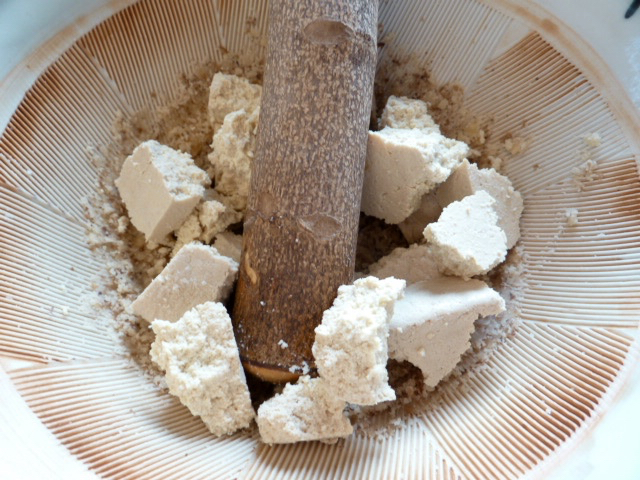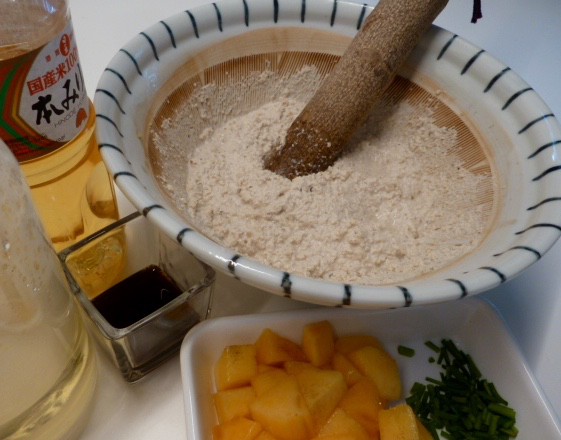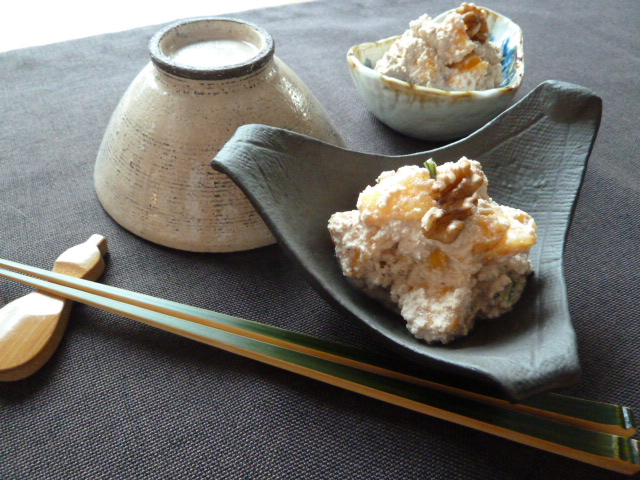I told you here about my mission to make proper Kinugoshi (Japanese silken tofu) at home. By now I can reliably repeat making both – momendofu (firm tofu) as well as Kinugoshi, which is especially wonderful with the heat of the summer that is finally approaching Germany. Kinugoshi is by far my most favorite lunch snack in hot weather. Served chilled with a refreshing ponzu sauce, some grated ginger and dry roasted katsuo bushi or equally wonderful with a sauce that I call ‘liquid umami’ and some wasabi for a little kick.
Okara are packed with fiber, protein and iron
Yesterday was tofu-making day in my kitchen and every time you make tofu you end up with about as much okara. The left over lees. As nothing goes to waste in the Japanese kitchen there are many ways to use up okara, which by the way is packed with fiber, protein and iron.
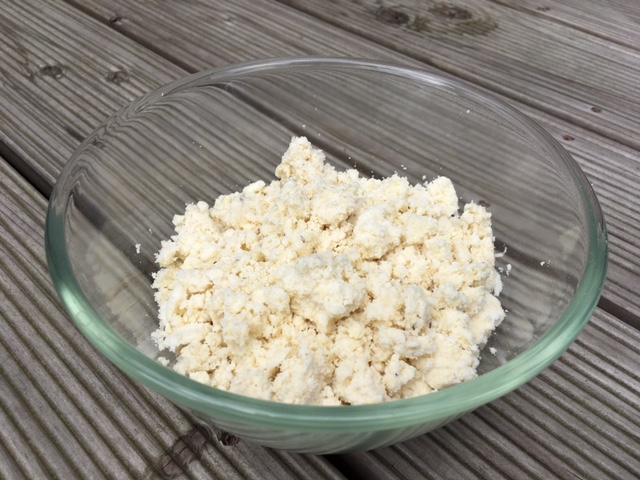
On my Shōjin Ryōri event I used okara to make croquettes – alongside with potatoes, pumpkin and adzuki beans -finished off with some freshly ground sancho pepper and super fine ‘snow’-salt.
Today though we will get a much-valued visitor that we haven’t seen for quite some time. There will be a lot of talking and sake to catch up and I prepared okara grissini as a nibble to go with the sake (Tskudani make a good nibble as well, so do pickled cucumbers) . Not exactly a Japanese recipe, but highly recommendable. You can make the okara-grissini using eggs as well as a replacing the eggs with flaxseeds. I prefer the vegan version, because the flaxseeds add an interesting component to the grissini.
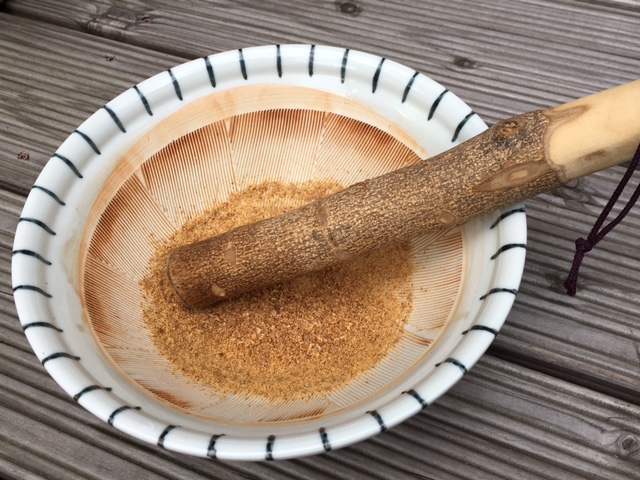
Recipe for 14 (vegan) Okara-Grissini
Ingredients |
|
| 200g | fresh okara |
| 100g | Bread flour |
| 1
1 Tbsp. 3 Tbsp. |
Egg or alternatively
Powdered flaxseeds and Water |
| ¾ tsp. | Salt |
| 1 tsp. | Baking Powder |
Method
Pre-heat the oven to 180° C. If you are preparing the vegan version mix the powdered flaxseeds with the water and let them rest for 10 Min. In the meantime mix the other ingredients in a bowl. Add the flaxseeds once they are done and knead well. The better you knead the better the dough will hold together. Especially important should you decide to use low-gluten flour.

Portion out about 25g of the dough and roll each of it up to a 20cm grissini. If you use larger amounts of dough or prefer the grissini to be thinner make sure to adjust the baking time accordingly. Put them on a parchment lined baking tray and bake them for 30 Minutes. After they have cooled for a few minutes you can eat them straight away. Ideally consume them the same day to enjoy their crispiness.
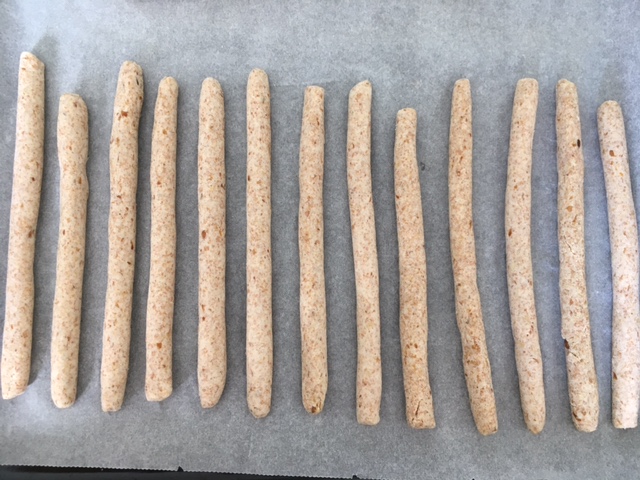
If you want to add nutrition you may change the flour to whole-grain flour. I also like to make okara-grissini with whole-grain spelt flour, but in this case I need to be a bit more conscientious when kneading the dough and rolling the grissini, as the dough doesn’t hold together as well.
* Okara can be kept up to five days in the fridge or several weeks in the freezer if you do not have the time to use it up right away.
Want more recipes using okra or tofu? Sign up for the newsletter and get them in your inbox.
